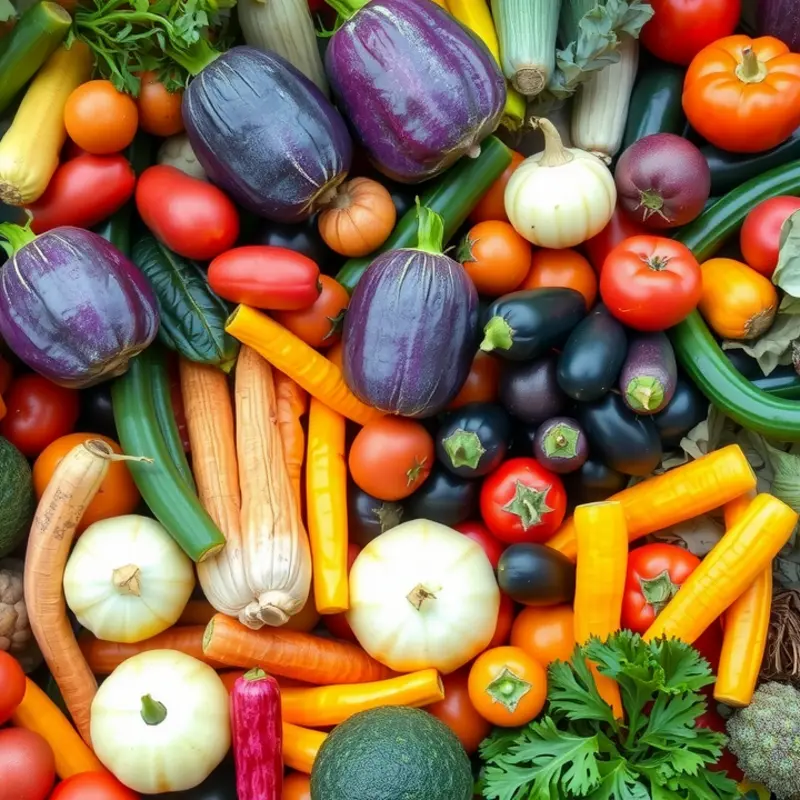Microwave cooking has gained popularity for its convenience and speed, but questions linger about its effects on food nutrients. Many believe that microwaving depletes essential vitamins and minerals, perpetuating fears about its safety and efficacy. This article dives deep into the science of microwaving, exploring whether this mode of cooking truly kills nutrients or if it is a food myth. We aim to provide clarity on this common concern, enabling readers to make informed choices when it comes to their diets.
Understanding Nutrient Loss in Cooking

Cooking methods can have varying impacts on nutrient retention in food. Some, like boiling and frying, are notorious for causing nutrient loss due to the direct exposure to heat and the leaching of vitamins into water or oil. Microwaving is often misunderstood as a prime culprit in nutrient depletion; however, it may surprise some to learn that it can actually be more effective at preserving nutrients compared to many traditional cooking methods.
When we examine different cooking processes, the impact on vitamins and minerals is a central concern. Water-soluble vitamins, such as Vitamin C and B vitamins, are particularly sensitive to cooking. These nutrients are easily lost in conventional methods like boiling if the cooking water is discarded. This is due to their solubility, where nutrients dissolve in the cooking liquid and are often poured away.
In contrast, frying can lead to the destruction of heat-sensitive nutrients due to prolonged exposure to high temperatures. It also introduces additional fats, which may overshadow any nutritional benefits. Steaming, on the other hand, often preserves nutrients well, as food isn’t submerged in water. Yet, it typically requires longer heating, which might still affect heat-sensitive nutrients like Vitamin C.
Microwaving employs a different strategy. Using electromagnetic waves, it heats food quickly and directly, minimizing the time nutrients are exposed to heat. This quick cooking time is crucial for preserving sensitive vitamins. Studies have indicated that microwaving broccoli, for example, can retain up to 97% of its flavonoids, a stark contrast to boiling, where more than 60% can be lost.
Moreover, because microwaving typically uses less water than boiling or steaming, water-soluble vitamins are less likely to leach out. This method’s efficacy extends beyond vegetables. Proteins, when microwaved, retain their nutritional integrity as well. Research comparing microwaving to boiling and frying shows lower protein degradation through microwaving, which could elevate its rank among nutrient-preserving methods.
Scientific inquiry into microwaving’s capability for nutrient preservation has sparked interest in the health-conscious community. While misconceptions persist, knowledge dissemination through credible platforms and studies helps clarify these points. Thus, understanding these dynamics enables informed choices about cooking methods.
For readers interested in integrating more nutrient-preserving practices into their cooking, there are resources that offer detailed guidance on optimal cooking techniques. To explore how you can implement these strategies effectively in meal prep, you might find valuable insights in practical ingredient batching, which emphasizes efficiency without compromising nutritional quality.
Overall, while no cooking method is free from causing some nutrient loss, microwaving emerges as a compelling option for preserving nutrients, especially for meals we need ready swiftly. As consumers become better informed about the nutritional implications of their cooking choices, microwaving stands as an ally in the quest to maintain a balanced and nutrient-rich diet.
Microwave Myths Debunked

One of the most persistent myths surrounding microwave ovens is that they destroy nutrients more than other cooking methods. However, the truth is that microwave cooking can often help retain nutrients when compared to conventional techniques.
Examining Nutrient Retention
First, let’s clarify how microwaves work. Microwave ovens heat food by creating electromagnetic waves that excite water molecules. This causes the food to heat quickly and evenly, unlike some traditional methods that can cook unevenly or require more time.
When it comes to nutrient preservation, time and temperature are critical. Nutrients like vitamin C and B-vitamins degrade quickly with prolonged heat exposure. As microwaves cook food faster, they often minimize nutrient loss. For example, steaming vegetables in the microwave usually leads to less nutrient loss compared to boiling them, which leaches vitamins into water.
Temperature and Moisture Control
Microwaves often require less liquid to cook food, which also helps in retaining water-soluble vitamins. Conversely, boiling vegetables can cause a significant drop in vitamins due to diffusion into the cooking water. To optimize nutrient retention, use minimal water and a short cooking time. Covering food while microwaving can create a steaming effect that further aids in nutrient conservation.
Chemistry Concerns
Some people worry that microwaving alters the chemistry of foods in harmful ways. In truth, the fundamental structure of food remains the same, and microwaving does not create toxic compounds. This method simply uses a different mode of heat transfer, one no more ‘dangerous’ than other heat-based methods.
Comparing with Conventional Methods
Let’s directly compare microwaving to other methods such as grilling, frying, and sautéing. Grilling can expose food to higher temperatures, increasing the potential for nutrient loss. Frying and sautéing often involve oils, adding fats and potentially altering the food’s nutritional profile. In contrast, microwaving maintains the integrity of the food by minimizing added fats and high-temperature exposure.
Recent research clearly indicates that the microwave can be quite effective in preserving nutrients. For busy cooks concerned about maintaining nutritious diets, understanding the nuances of microwave cooking can mitigate fears of losing food quality.
For related strategies on preparing nutrient-rich meals with minimal effort, consider checking out practical ingredient batching. This can help you plan meals efficiently without sacrificing nutritional integrity.
The next time you reach for your microwave, do so with confidence, knowing it can be an ally in your quest for nutritious and convenient meals.
Final words
Microwaving is often misunderstood as a cooking method that strips food of its nutrients. However, extensive research suggests that microwaving can actually help preserve the vitamins and minerals in food, specifically due to its quick cooking time and lower water usage. By recognizing the facts over myths regarding microwaving, you can confidently use this convenient cooking method without jeopardizing your health. Integrating microwaved meals as part of a balanced diet can help streamline your meal preparation while still ensuring you get the nutritional benefits your body needs.








